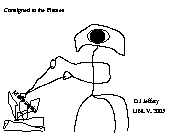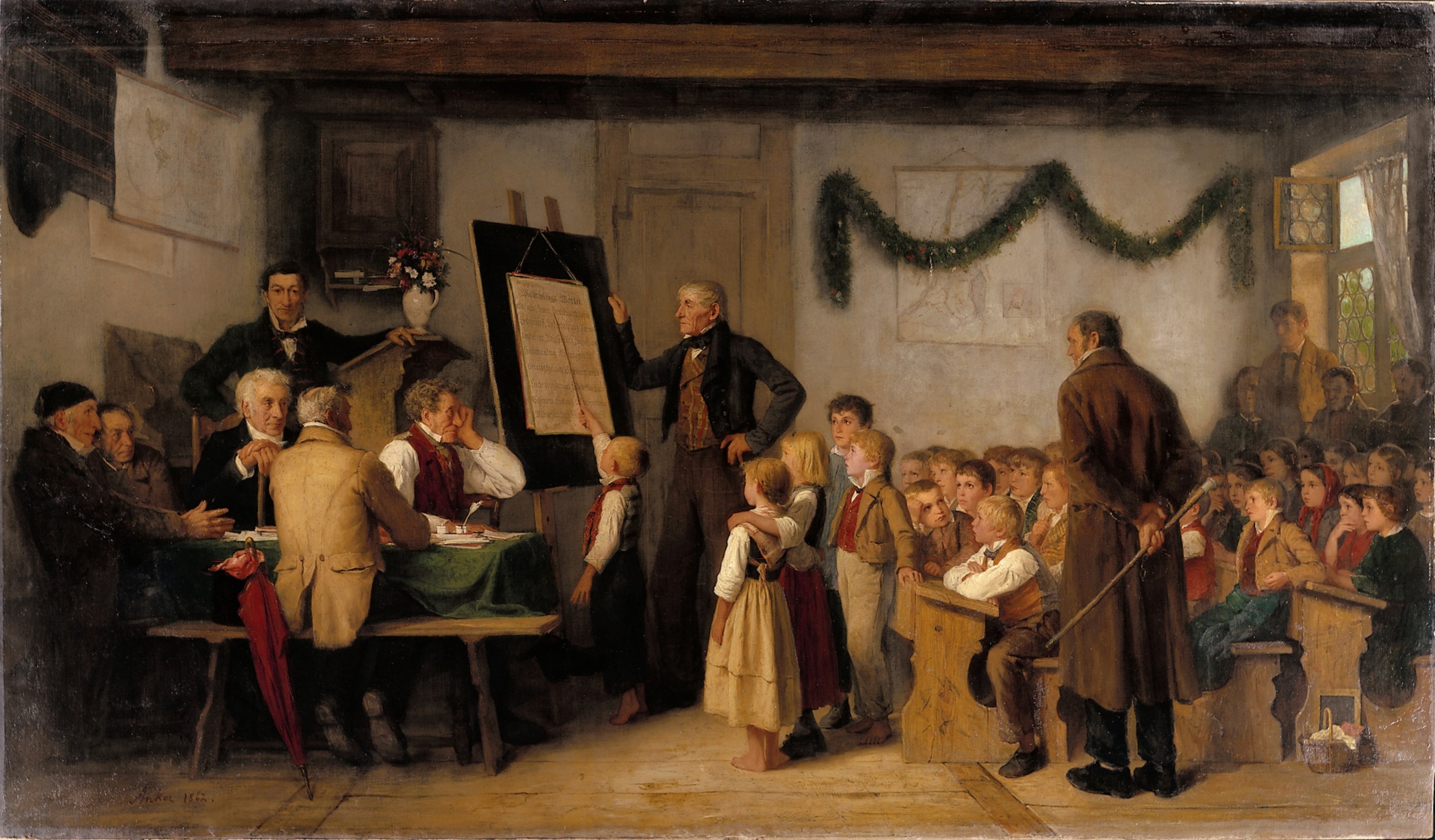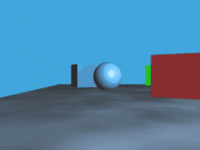Textbook:
Weber & Arfken, 2004, Essential Mathematical Methods for Physicists
(hereafter
Weber or WA as convenient).
See also the
publisher's Weber site
and
Google books Weber site
which has online detailed contents.
This is a somewhat more pedagogical version of
the classic Arfken book:
Arfken & Weber, 2005, Mathematical Methods for Physicists
(hereafter usually
Arfken).
Yours truly actually uses Arfken (1970) as a reference---since that is the
edition of Arfken that he's had for three dog ages.
Weber
is, of course, pretty good.
All the good stuff presented with explication and enough rigor for
most physicists.
I have to admit that sometimes the pedagogy stuff is an annoyance to me.
I prefer to see the general result and then specialize for examples:
i.e., I like the original Arfken style better.
But this may just be a matter of taste.
Also maybe fewer, but choicer words would help in some cases I think.
But all instructors think that about their texts.
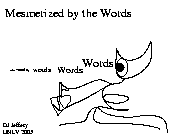 Alien mesmerized by words.
Alien mesmerized by words.
There are also a few typos, wrong internal references (which
happen all the time in revised editions), and even occasionally
(in my view) subpar explication.
Students (and instructors) shouldn't be afraid to challenge the text:
usually the text is right, but even
Arfken nods.
Nonetheless you will probably treasure this book and keep it after the
binding falls apart and it is in piles of fragments.
We will hew pretty closely to
Weber
since, among other things, the instructor's knowledge
is nearly textbook thin on many, but not all topics.
We only cover part of
Weber
since there is more in
Weber
than can be covered in two semesters (maybe even three semesters) and we have only one: see
Tentative Schedule below.
Exams: There will be 2 in-class exams of 75 minutes and a 2-hour COMPREHENSIVE FINAL.
The in-class exams cover the material up to some cut-off point
that will be announced in class and on the course web page
in the
Tentative Schedule.
The final is about 50 % weighted or more on material since the last in-class
exam and about 50 % weighted or less on all the material that came before
the last in-class exam.
The tentative dates for the exams are:
_________________________________________________________________
Exam Date Solutions (posted post-exam)
_________________________________________________________________
Exam 1 Sep30 R Exam 1 solutions
Exam 2 Dec09 R Exam 2 solutions
Final Exam Dec14 T Final Exam solutions
The final is at 7:30--9:30 am in the regular class room
as specified by
Finals schedule for 2010 Fall.
_________________________________________________________________
The exams will mainly consist of full-answer questions.
A few easy multiple-choice questions may be included at the start as a warm-up.
NO scantrons are needed.
The exams are closed book.
Calculators are permitted only for calculational use which may be slight.
No saved formulae, solutions, programs---you are on your honor.
Cell phones MUST be turned off and be out of sight.
Make-up exams are possible, but students must ask for them
promptly and avoid knowing anything about given exams.
Evaluation and Grading: The 3 grading categories, their
weightings, and their drops are:
homeworks 10 % or so 1 drop
2 in-class exams 35 % or so no drop
1 comprehensive final 55 % or so no drop
Note that yours truly is leaving myself a bit of wiggle room on weighting.
I don't think I will wiggle, but sometimes anomalies arise and a bit of
wiggling is expedient.
Each in-class exam is worth 22.5 % or so of the final grade.
Attendance is NOT kept and NO marks are assigned
for attendance.
Students are encouraged to keep good attendance.
Attendance keeps all of us yoked to the material and moving forward.
In any course, just showing for the lectures keeps the student
at least partially up to date just in itself.
It's hard to fall completely behind if you attend lectures.
And there is lots of evidence that good attendance correlates
with achievement---but don't ask me to produce this evidence---it's
what deans tell me.
There are absolutely NO extra credits.
Letter grades will be assigned
per
NAU
grading policy--which allow instructors some freedom of
interpretation on how do determine ``average''.
The instructor uses a curve to automatically
assign letter grades during the semester---if there are enough
students to make a curve meaningful---if there arn't, the
instructor
just decides on letter grades.
There is NO fixed scale.
The curve is only used for current total grade: individual items (tests, etc. are NOT curved).
For these curved grades the instructor uses an 11-grades scale: A,B+,B,B-,C+,C,C-,D+,D,D-,F.
There are no pluses or minues with A and F.
The final grades are decided on by the instructor
directly---the curve is NOT used, except as a guide.
In this course, I expect that the class
GPA
will be in the B- range (i.e., about 2.7) or a bit higher---but I am rather
parsimonious about A's---just being in the upper half of the class is not enough.
There do NOT have to be any D's or F's---the curve is NOT used for final grades.
The
NAU
grading policy has only 5 levels, of course: A,B,C,D,F.
The instructor
will submit MIDTERM GRADES and FINAL GRADES
as scheduled in the
2010 fall academic calendar.
Remember that after an instructor has submitted FINAL GRADES,
any adjustments (except for purely clerical errors) are NOT easy.
This is true for any course.
Students should make any queries about their final grades before
the instructor submits them.
About grades: they are important, but they are not everything.
They are a measure of what you learn in a course: the learning itself is what counts ultimately.
If you've worked hard in a course and learnt a lot, then that helps you will all the following
courses and all the rest of your life.
The best strategy is to work hard in a course subject to all other constraints in life.
Of course, if you need a specific grade for some particular thing (e.g., a scholarship),
don't undershoot.
Don't imagine you can fine tune your effort just to get that specific grade.
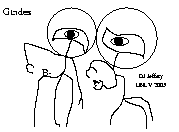 Beware of aliens bearing grades.
Beware of aliens bearing grades.




